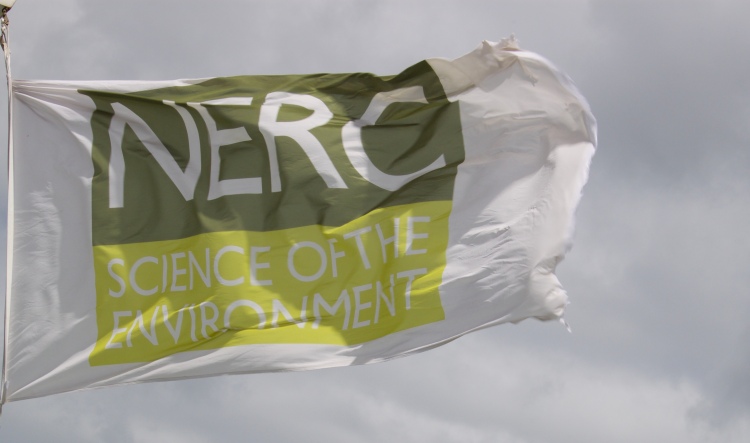Episode 1: The Charlie-Gibbs Fracture Zone
On the 6th June 2017, an international team of scientists led by Dr. Ewan Wakefield departed Southampton on the Royal Research Ship Discovery. Their cruise number was DY080 and their aim was to gather multiple data from an area in the mid-Atlantic where the Charlie-Gibbs Fracture Zone (CGFZ) interrupts the mid-Atlantic ridge between the Azores and Iceland. In this area, polar and southern waters meet and form a perennial but moving front. Major fronts of the world’s oceans support relatively high levels of primary and secondary production and tend to be important foraging hotspots for wide-ranging higher predators, such as pelagic seabirds. Ewan and colleagues observed that tracking data highlighted the sub-Polar Front of the North Atlantic as a potentially important area for both migratory and locally-breeding seabirds. In particular, the complex region of the sub-polar front south of the CGFZ, where the North Atlantic Current crosses the mid-Atlantic ridge, is targeted by seabirds from multiple populations. In addition, a small but growing body of evidence suggests that other wide-ranging taxa, including cetaceans, tuna and marine turtles, also aggregate south of the CGFZ. As evidence from tracking data mounts, Bird Life International is preparing to submit a proposal to OSPAR to designate this area as an Important Bird Area.
 The cruise route (yellow), with the North Atlantic Current (green). The proposed Important Bird Area (pink). The Scientific Team (bottom right). From left to right: Igor Belkin, Vladimir Laptikhovsky, Paulo Catry, Ali Al-Hashem, Holly Hogan, Simon Pinder, Julie Miller, Ewan Wakefield, Paloma Carvalho, Laura Thompson, Nadya Ramirez-Martinez, Marguerite Tarzia, Guilherme Bortolotto de Oliveira, Claire Lacey, and Tom Browning.
The cruise route (yellow), with the North Atlantic Current (green). The proposed Important Bird Area (pink). The Scientific Team (bottom right). From left to right: Igor Belkin, Vladimir Laptikhovsky, Paulo Catry, Ali Al-Hashem, Holly Hogan, Simon Pinder, Julie Miller, Ewan Wakefield, Paloma Carvalho, Laura Thompson, Nadya Ramirez-Martinez, Marguerite Tarzia, Guilherme Bortolotto de Oliveira, Claire Lacey, and Tom Browning.
Despite these advances in tracking data, very few direct observations have been made of higher predators in the CGFZ. As a result there is a lack of information on predator distribution, abundance and diet – information that is necessary for effective management and protection. Observational evidence would also serve to address fundamental ecological questions, such as how oceanic higher predators partition niches, how they connect disparate ecosystems and how these processes are affected by climate change.
In this episode, we hear from PSO (Principal Scientific Officer) Dr. Ewan Wakefield and Marguerite Tarzia representing Birdlife International on the cruise. Together, they explain the motivation behind the research and how a multi-disciplinary team ended up on a ship heading off to the middle of the ocean…

The NERC flag catching the ‘breeze’ on the RRS Discovery (Photo: Julie Miller)
Cruise DY080 forms part of a UK Natural Environment Research Council (NERC)-funded project Seabirds and wind – the consequences of extreme prey taxis in a changing climate, which aims to quantify the past and future distributions and ecosystem roles of pelagic seabirds in the CGFZ and similar areas.
Don’t forget you can subscribe to automatically receive all our latest content, or just our podcasts. We are also available on iTunes and other podcast catchers.
This podcast series was designed, recorded and narrated by Julie Miller, and edited by Martina Quaggiotto and Taya Forde.
Feature image: Royal Research Ship Discovery, courtesy of Julie Miller.
Music during the podcast from “(Another) Swan Song” by The New Mystikal Troubadours, accessed from freemusicarchive.org.
Intro and outro music sampled from: “The Curtain Rises” and “Early Riser” Kevin MacLeod [CC BY 3.0]
The researchers on the discovery are obviously enthusiastic and dedicated to their fields of interest. It’s difficult for non scientists to grasp why birds gathering in a hot spot (CGFZ) is important and the area needs protection as it is mid Atlantic. (Pretty remote)
LikeLike
Thanks for your comment Stephen, as an introductory episode we are delighted you found interest in the question as to why the birds are gathering there. This is exactly what the team hope to find out, but the understanding is it is potentially driven in part by the unique physical features of the ocean in this area, where fronts meet and there is an upwelling of nutrients. We hope you continue listening to the series, which follows up on this theme and hopefully helps build a picture as to why we are undertaking this work. As for the protection in the remote are, this is both a pro and a con. The area is remote but protection will ensure fishing vessels(which should have satellite trackers on by international law) will be limited in their activities int he region. Something we should be able to monitor remotely. Also the ‘international’ nature of this remote- but important area means it ‘may’ be more likely to achieve protection as no government may lay claim to it within its own boundaries.As you quite rightly state, save for international agreements on satellite tracking, the remoteness may prove difficult in policing, however making progress on international protections such as this can only further collaboration in harnessing resources form the ocean in a sustainable manner.Thanks again!
LikeLike
The researchers on the discovery are obviously enthusiastic and dedicated to their fields of interest. It’s difficult for non scientists to grasp why birds gathering in a hot spot for food etc.(CGFZ) is important and the area needs protection as it is mid Atlantic. (Pretty remote)
LikeLike